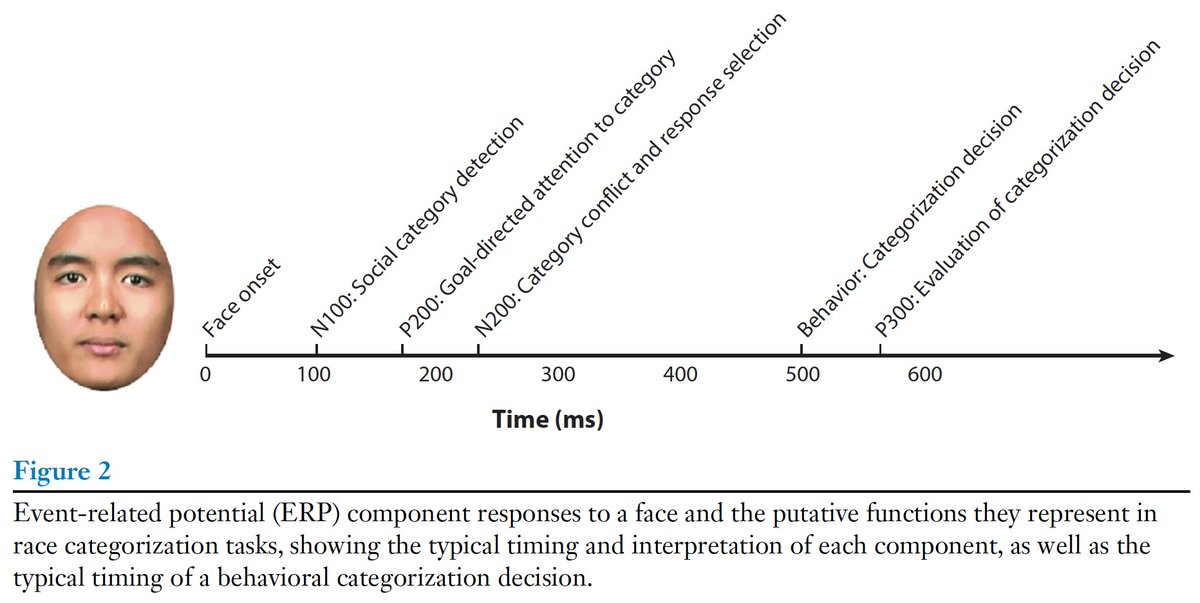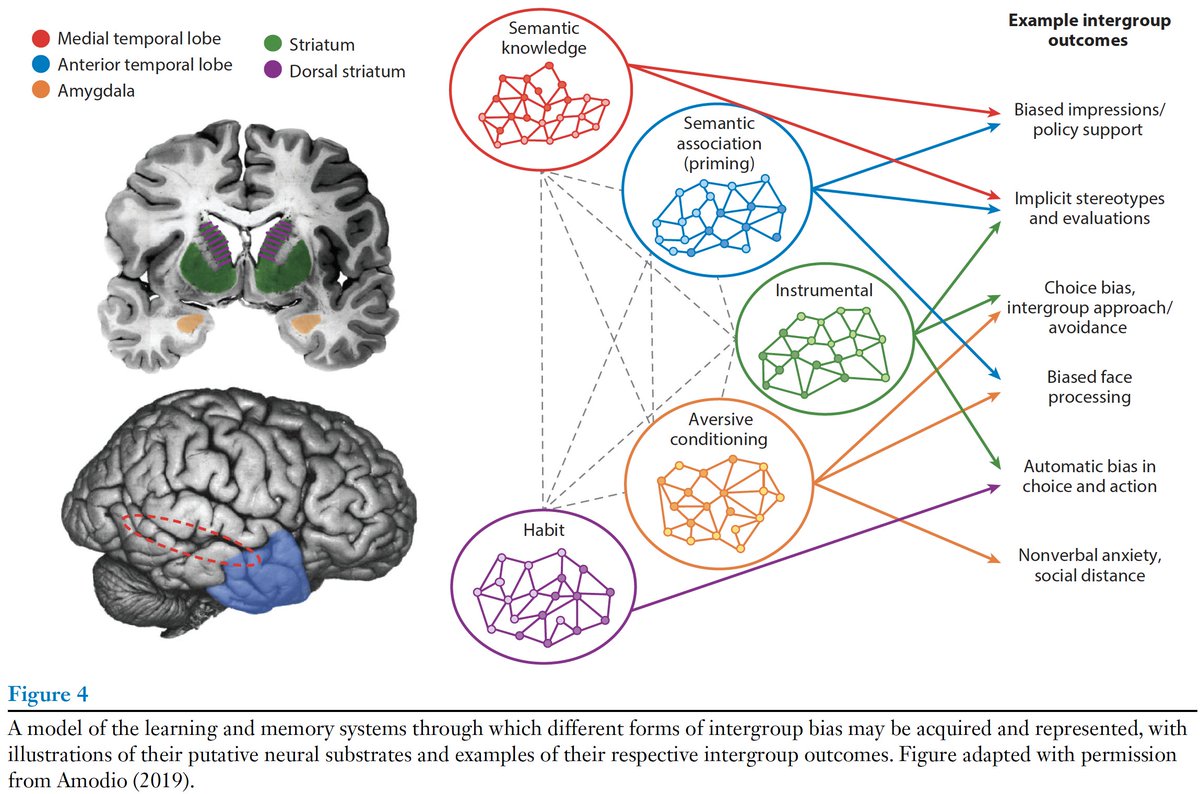Has social neuroscience taught us anything about the psychology of prejudice, beyond what we already knew from behavioral studies?
@profcikara and I answer with a resounding YES in our recent Annual Review article!
https://www.annualreviews.org/doi/abs/10.1146/annurev-psych-010419-050928">https://www.annualreviews.org/doi/abs/1...
Here are some key take-aways:
@profcikara and I answer with a resounding YES in our recent Annual Review article!
https://www.annualreviews.org/doi/abs/10.1146/annurev-psych-010419-050928">https://www.annualreviews.org/doi/abs/1...
Here are some key take-aways:
Social neuroscience studies have revealed the timecourse of social categorization:
Group identity is detected fast—at just ~100 ms after face onset--and ERPs reveal a sequence of visual, cognitive and motivational processes leading to categorization decisions
Group identity is detected fast—at just ~100 ms after face onset--and ERPs reveal a sequence of visual, cognitive and motivational processes leading to categorization decisions
Social neuroscience has advanced theory on how prejudices are formed, via different learning systems (e.g., semantic knowledge & association, instrumental learning, and Pavlovian conditioning, habit), with novel implications for how bias is expressed and potentially reduced
By linking prejudice to different neural systems, we can now apply more appropriate methods to assess them--e.g., in verbal reports & deliberative judgment, conceptual/valence priming, reward reinforcement & choice, or autonomic arousal and freezing
This social neuroscience framework also helps to fill in the black box of implicit bias—typically explained with vague models of conceptual associations—by grounding it in known mechanisms of learning and memory
Our understanding of social bias in face perception has also advanced significantly:
Social neuro studies have revealed key components of face processing & how prejudice, stereotypes, and social goals affect them, along with the methods needed to show this
Social neuro studies have revealed key components of face processing & how prejudice, stereotypes, and social goals affect them, along with the methods needed to show this
Effects of intergroup emotion on decision making and behavior are more clearly understood now, too, by considering the neural structures involved in responses such as threat, empathy, envy, schadenfreude, and guilt
The control of bias—whether it succeeds or fails, and which interventions are needed for particular situations or individuals—has been greatly illuminated by adapting cog neuro models of cognitive control
Finally, by connecting the fields of neuroscience and intergroup psychology, social neuroscience has introduced countless new methods to the study of prejudice, from fMRI and ERPs to computational modeling and novel experimental paradigms
Of course, we still have far to go: most work has focused on sociocognitive process and individual-level bias.
But new work is examining how prejudice operates between people and across social networks, and even between individuals and social systems--a lot to be excited about!
But new work is examining how prejudice operates between people and across social networks, and even between individuals and social systems--a lot to be excited about!
And if you hit a paywall trying to access our article at the link above, try this one--for academic purposes only! :)
https://bit.ly/2Sf1hbv ">https://bit.ly/2Sf1hbv&q...
https://bit.ly/2Sf1hbv ">https://bit.ly/2Sf1hbv&q...

 Read on Twitter
Read on Twitter




